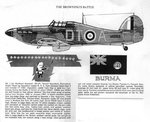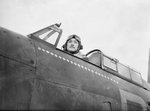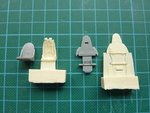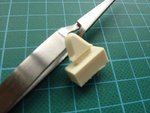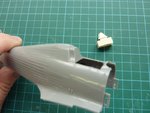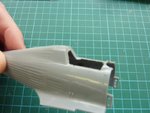- Thread starter
- #21
ozhawk40
Master Sergeant
Great stuff! Given that the Hurricane behind Tuck and the group is V6555, the the last profile you posted is the correct pattern, in the 'B Scheme'.
I've been checking a lot of info, and come across an anomaly in the same publication, which describes the 'A' and 'B' schemes, then shows some profiles which are totally the opposite to the descriptions and diagrams ! I've was thinking there might have been a typo, but I now think the profiles were wrong (it is an old book !).
I just need to check a couple of other things before I can confirm the camouflage pattern, and should have this done by late tonight.
Thanks Terry, I'm busy on it also. The group photo in the Flypast article must be dated after the battle with the Italians on remembrance day 1940 11/11/40. I'm not sure if this discounts it as being V6555, and is one of the later ones.
Cheers
Peter

